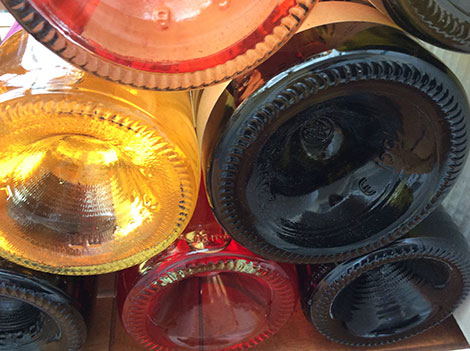

 Are Spanish wines on the right track in the US? Photo: Amaya Cervera.
Are Spanish wines on the right track in the US? Photo: Amaya Cervera.
Nobody can predict what is going to happen in the next few years but we have asked the importers we have talked to in this three-part series to share their thoughts with us. Below are their answers to two questions that highlight both the challenges and strengths of Spanish wine imports in the US.
Europvin: “The danger of commoditization; we fear that Spain comes to be viewed primarily as a source of interchangeable brands of cheap, full-flavored wine.”
Olé Imports: “Education.”
De Maison Selections: “Poor perception of the country as a high-end wine producing region and overcoming the value category.”
Aurelio Cabestrero: “Lack of knowledge about our indigenous grape varieties and our regions.”
The Winebow Group: “The proliferation of private label wine entries into the market with homogeneous taste profiles has the potential to drive consumers away from the category. This trend also makes it more difficult to sell the consumer on Spain’s collectable wines.”
Valkyrie Selections: “The $25-$50 wines. There are some fantastic mid-level wines that have tremendous potential but people seem to struggle to find their place.”
Folio: “The pronunciation of both the winery name and the grape variety the wine is made from.”
Kysela: “Heavy competition from American wines in the US. Plus more tasting and food and wine events featuring Spain are needed…”
José Pastor: “Too many private labels and customized cuvées made for the US market.”
The answers to this question represent a broad spectrum of opinions. Based on their answers, producers and importers should take great caution when mapping out their value and price sales strategies in the US. Furthermore, it is important for both producers and importers to plan properly (i.e. expand educational offerings, promote a stronger presence for on-the-ground support), and also to make sure that they produce wines of both quality and originality. Americans know their wines, and are not (if they ever were) easy to please. In many ways this is a highly professional and curious audience, with an intrinsic sense of value. The physical size of the country inspires endless opportunities but don’t be fooled, you will have to step up your game...or bite the dust.
We also asked importers to guess which Spanish style of wine, region and/or variety will become more fashionable and in higher demand in the near future.
Classical Wines: “Mencía for reds has much unrealized potential, as well as Godello for whites.”
Olé Imports: “Rioja, Galicia and Catalunya in general.”
De Maison Selections: “Lower alcohol and authentic wines.”
Steve Miles: “I think that Mencia from Bierzo can become a real winner in years to come.”
Aurelio Cabestrero: “Mencía from Ribeira Sacra and Bierzo, Bobal from Utiel Requena and Manchuela.”
Mónica Nogues: “I believe wines with personality from all over Spain will be in higher demand.”
The Rare Wine Co.: “We’ve already seen a significant resurgence in the market for traditional Rioja and fino sherries, and I think that trend is bound to continue.”
The Winebow Group: “We believe that the continued proliferation of Spain’s indigenous varietals will continue to flourish in the United States market.”
Folio: “Rías Baixas (unoaked white wines made from the Albariño grape variety), Priorat (wonderfully concentrated wines that are fruit-forward and possess a subtle minerality) and both Rioja Alavesa (known for producing elegant, incredibly smooth Tempranillos that age incredibly well) and Rioja Baja (known for producing stunning Garnacha-based wines that are lighter in body and perfect for Pinot Noir fans).”
Kysela: “Rueda whites, La Mancha and Rioja…”
Common ground is harder to ascertain from these answers but there are a few overlapping themes. First, and most importantly, there are a number of talented Spanish producers showing that brilliance is attainable on a regular basis, without sacrificing standards in quality or terroir. Second, importers choose what they already know and love, as well as what is already featured in their portfolios.
While this isn’t a bad thing, it means that sometimes they must take risks in order to set trends and/or to offer more interesting selections. Third, importers are looking for “indigenous”, “authentic” and “traditional” styles regardless of the region. From the Galician coast on the northwest to Central Mediterranean Manchuela, importers seek out genuine producers who can deliver quality at reasonable prices.